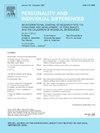清晰地看到情绪:情商和情绪图片的分类
IF 2.6
2区 心理学
Q1 PSYCHOLOGY, SOCIAL
引用次数: 0
摘要
情绪智力(EI)和情绪清晰度(EC)被定义为情绪能力的关键方面,但它们的行为相关性仍未得到充分探讨。本研究考察了来自情绪分类任务的行为指标是否与特质EI和EC相关。参与者(N = 154)对不同效价的情绪图片进行分类,并提供信心评级。反应时间变异性(sdRT)、置信度和选择第二种情绪的概率(PSE)与主导反应百分比(PDR)一起被提取出来,反映了情绪标签的清晰度。参与者还完成了EI和EC的自我报告测量。结构模型显示,sdRT、PSE和confidence与PDR显著相关,PDR也与EI和EC相关,但仅适用于正刺激。值得注意的是,自信与情商有关。与消极刺激相比,积极刺激的表现一致性和自信心更强。这些研究结果进一步揭示了基于表现的瞬间交际指标与特质水平的情绪能力之间的关系,强调了情绪标签在情绪功能中的中心地位。本文章由计算机程序翻译,如有差异,请以英文原文为准。
Seeing emotions clearly: Emotional intelligence and the categorization of emotional pictures
Emotional intelligence (EI) and emotional clarity (EC) are conceptualized as critical facets of emotional competence, yet their behavioral correlates remain underexplored. This study examined whether behavioral indicators derived from an emotional categorization task are associated with trait EI and EC. Participants (N = 154) categorized emotional pictures varying in valence and provided confidence ratings. Reaction time variability (sdRT), confidence level, and the probability of choosing a second emotion (PSE) were extracted, alongside the percent dominant response (PDR), reflecting clarity in emotional labeling. Participants also completed self-report measures of EI and EC. Structural models revealed that sdRT, PSE, and confidence were significantly associated with PDR, which was also associated with EI and EC, but only for positive stimuli. Notably, confidence was associated with EI. Greater performance consistency and confidence were observed for positive relative to negative stimuli. These findings the advance understanding of how performance-based indicators of momentary EC relates to trait-level emotional competencies, emphasizing the centrality of emotional labeling in emotional functioning.
求助全文
通过发布文献求助,成功后即可免费获取论文全文。
去求助
来源期刊

Personality and Individual Differences
PSYCHOLOGY, SOCIAL-
CiteScore
8.50
自引率
4.70%
发文量
577
审稿时长
41 days
期刊介绍:
Personality and Individual Differences is devoted to the publication of articles (experimental, theoretical, review) which aim to integrate as far as possible the major factors of personality with empirical paradigms from experimental, physiological, animal, clinical, educational, criminological or industrial psychology or to seek an explanation for the causes and major determinants of individual differences in concepts derived from these disciplines. The editors are concerned with both genetic and environmental causes, and they are particularly interested in possible interaction effects.
 求助内容:
求助内容: 应助结果提醒方式:
应助结果提醒方式:


